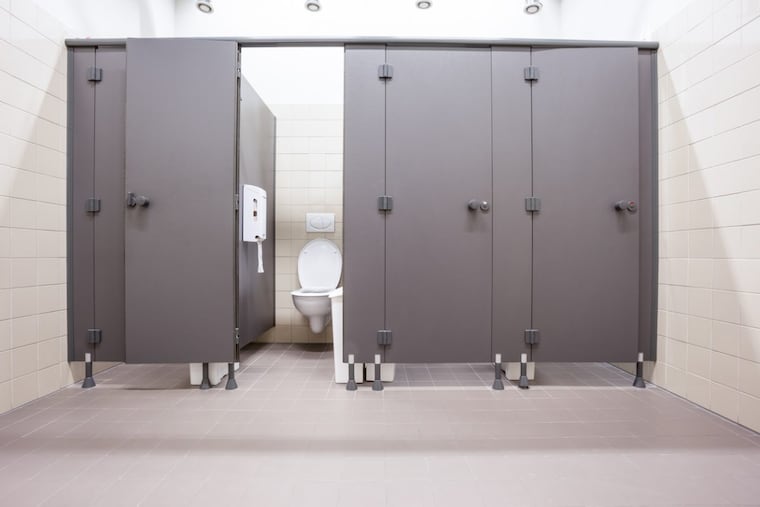Public bathrooms are risky during the pandemic. These safety tips can help.
There will be times when you are away from home and you simply can’t hold it. Here are the answers to some of your most pressing bathroom questions in the age of coronavirus.

If using public bathrooms didn’t already give you the skeevies pre-pandemic, the thought of doing your business away from home is probably bugging you out even more right now.
And rightly so.
In the era of coronavirus, bathrooms — especially communal ones — are the perfect storm of shared spaces, poor ventilation, and floating aerosols that can make us sick. We understand, however, there will be times when you’ll be away from home and just won’t be able to hold it.
» READ MORE: Here's what six feet looks like: Our handy, easy-to-picture guide
Here are the answers to some of your most pressing bathroom questions:
Can I get COVID-19 from using a public bathroom?
The short answer is they are risky. Here’s why:
Bathrooms tend to be poorly ventilated, explains Charles Haas, a professor of environmental engineering at Drexel University, whose expertise is how infectious organisms behave in different spaces. Poorly ventilated spaces put us at higher risk for contracting COVID-19 because when a virus attaches itself to a droplet in a small space, it will be more concentrated. A well-ventilated room will potentially disperse any virus quicker. And that can be the difference between getting infected and not getting infected if an asymptomatic person happens to have exited the bathroom before you entered.
People often congregate in bathrooms. That means more people talking to each other, or on their phones. “When we are talking, we are releasing aerosols that could potentially have virus,” Haas says. “And if you are asymptomatic, you can infect people around or anyone who may perhaps walk into the space after you.”
» READ MORE: How to shop safely now that stores are open
And we just don’t breath out these aerosols. “We know coronavirus doesn’t just live in our respiratory tracts; it can be found in the stool,” says Dr. Jen Caudle, a family physician and associate professor at Rowan University. “And depending on the strength of the flush it can be aerosolized and dispersed through the air.” So, Caudle says: If there’s a lid, close it before you flush.
Proper hygiene is key for coronavirus prevention in restrooms, Caudle says.
According to research published this month in the journal Physics of Fluids, a toilet flush releases aerosol droplets into the air that can rise as high as three feet. These droplets, the report said, can linger in the air long enough to be inhaled by someone just outside the stall washing their hands or in the next stall over. The droplets can also land on bathroom surfaces: sinks, doorknobs, and paper towel dispensers. The smaller the bathroom, the more area these droplets can cover.
Well, that sounds really gross. What can I do to stay safe?
Wear a mask the entire time you are in the bathroom. “It’s the most important thing you can do,” Haas says, because it protects you and the people around you. He says that you should wear a mask absolutely anywhere you can.
Practice social distancing. Maintain six feet between you and others in the bathroom. If you are in a multi-stall lavatory, leave a stall or sink between you and others. If the bathroom has just one or two stalls — and you are not bursting at the seams — wait until you are the only person in the space.
» READ MORE: This is what 6 feet apart looks like
Wash your hands. Wash your hands before you use the facilities. And wash them after you leave, Caudle says. “You don’t want the virus to find its way into your body through an errant rubbing of the eye or scratch on the nose,” Caudle says.
Don’t touch surfaces. Turn off manual faucets with a paper towel. Close the lid with a paper towel and use your foot to flush the toilet. Don’t touch doorknobs or handles when entering or leaving the facilities.
Don’t linger. Public bathroom trips are not the time to touch up your makeup, fix your hair, or take the bathroom selfie. “The less time you spend in the bathroom, the more you are able to limit possible exposure,” Caudle says. You want to get in and get out.